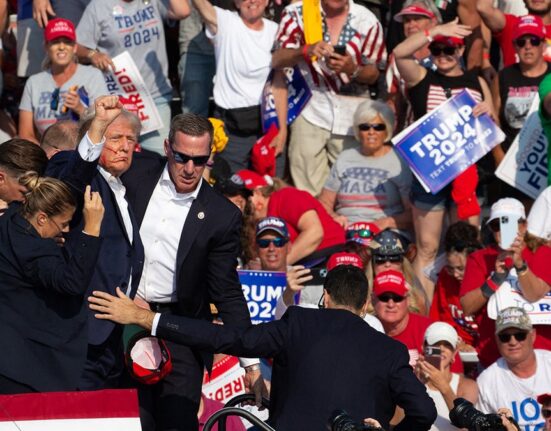Amidst the sweltering heat in Guangzhou, China, a once vibrant hub of garment manufacturing now stands subdued. The relentless sun beats down on factories that were once bustling with activity; now, many lie dormant, their doors shut tight against the world outside. Bright red signs dot the landscape, proclaiming industrial spaces for sale or rent—a stark reminder of the struggles faced by China’s small workshops.
In this era of cutthroat competition and strategic defiance, where economic tides shift like sand beneath one’s feet, the plight of Chinese workshops is a poignant tale of resilience amid adversity. The specter of Trump’s tariffs looms large over these workshops, casting a shadow on their already dim prospects. But are the tariffs truly to blame for their woes?
As workers labor under harsh conditions for meager pay, a deeper narrative unfolds—one that speaks of an industry in flux, grappling with the repercussions of global trade dynamics. The U.S.-Chinese cease-fire may have offered a glimmer of hope, but its aftermath has left exporters grappling with crippling tariffs and dwindling opportunities in light-industry manufacturing.
“Workers are increasingly reluctant to toil for low pay under harsh conditions in China’s workshops…”
Guangdong Province and its bustling capital Guangzhou have become battlegrounds in this economic war—a frontline where trade tensions play out in real-time. Once thriving export sectors are now reeling under the weight of punitive tariffs, imposed with surgical precision by the Trump administration. The coastal regions bear witness to an industry at crossroads—struggling to navigate treacherous waters as old paradigms crumble.
“It was 96 degrees in the shade…sweltering sewing workshops…dark factories with closed doors…”
The echoes of a bygone era resonate through Guangzhou’s deserted streets—a haunting reminder of times when American consumers fueled China’s export engine. Now, those same streets wear a deserted look; once-teeming factories stand silent witness to an industry in decline. Managers whisper tales of vanished orders and shrinking bottom lines—an ominous harbinger of uncertain times ahead.
Amidst this backdrop of uncertainty and upheaval, questions linger—will China’s small workshops weather the storm? Can they adapt and evolve in response to changing market forces? Or will they become casualties in a larger geopolitical game played out on an international stage?
As policymakers strategize and economists analyze trends, one thing remains clear—the fate of China’s small workshops hangs delicately in the balance. In a world where every tariff hike sends ripples across continents and every negotiation holds potential consequences unseen, these workshops stand as symbols of resilience amidst turmoil.
Expert Analysis:
Renowned economist Dr. Li Wei notes that while Trump’s tariffs have certainly exacerbated challenges faced by Chinese workshops, underlying structural shifts within China’s economy cannot be overlooked.
He emphasizes the need for diversification and innovation within the sector to ensure long-term sustainability amid evolving global trade landscapes.
Dr. Wei underscores that adaptive strategies coupled with targeted policy interventions can pave the way for revitalizing China’s small workshop ecosystem.
In conclusion, as dusk descends over Guangzhou’s factory districts casting long shadows over empty streets—it serves as a poignant reminder that behind every closed door lies a story waiting to be told; stories woven from threads spun amidst adversity and uncertainty—a testament to human resilience enduring even amidst darkest hours.






Leave feedback about this